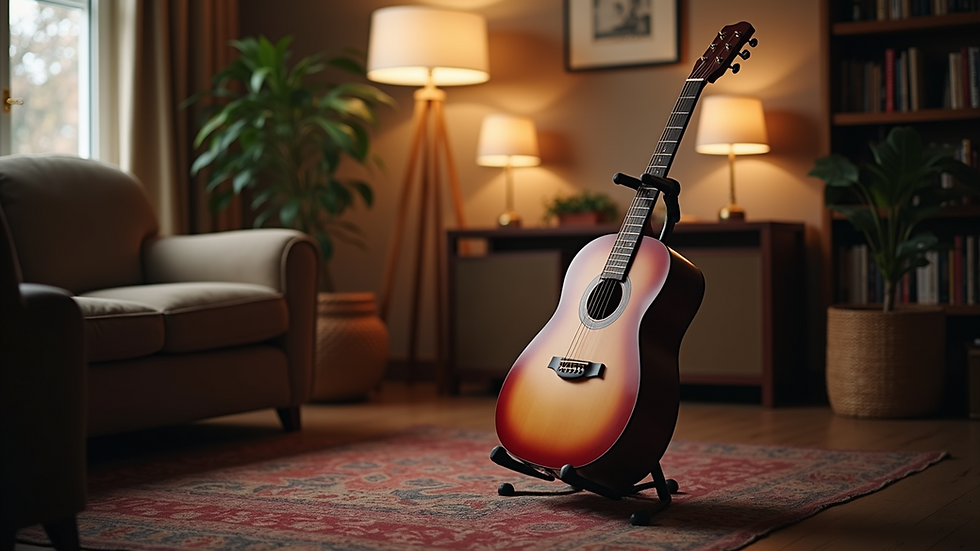Beginner-Friendly Violin Lessons for Aspiring Musicians
- BROOKLYN MUSICALS
- Oct 20
- 4 min read
Starting to learn the violin can be an exciting and rewarding journey. This beautiful instrument offers a wide range of musical possibilities, from classical masterpieces to contemporary tunes. However, for those new to the violin, the initial steps might seem challenging. This guide will walk you through everything you need to know to begin your violin adventure with confidence and joy.
Why Choose Violin Classes for Beginners?
Learning the violin through structured classes designed specifically for beginners has many advantages. These classes provide a clear roadmap, ensuring you build a solid foundation in technique and musical understanding. Here are some key benefits:
Structured Learning: Beginner violin classes follow a step-by-step curriculum that gradually introduces new skills.
Expert Guidance: Qualified instructors can correct your posture, bow hold, and finger placement early on, preventing bad habits.
Motivation and Support: Being part of a class creates a community where you can share progress and stay motivated.
Access to Resources: Classes often provide sheet music, practice exercises, and sometimes even access to online materials.
If you are looking for a reliable starting point, consider enrolling in beginner violin lessons that cater to new learners with patience and expertise.
Essential Equipment for Beginner Violinists
Before diving into lessons, it’s important to have the right equipment. Here’s what you’ll need to get started:
Violin: Choose a violin that fits your size. For children, fractional sizes like 1/4 or 1/2 are common, while adults usually use full size (4/4).
Bow: A good quality bow is essential for producing a clear sound.
Rosin: This is applied to the bow hair to create friction with the strings.
Shoulder Rest: Helps support the violin comfortably on your shoulder.
Tuner and Metronome: These tools help you stay in tune and keep time.
Music Stand: Keeps your sheet music at eye level for easy reading.
Investing in decent equipment from the start will make your practice sessions more enjoyable and effective.
How to Learn Violin as a Beginner?
Starting violin lessons can feel overwhelming, but breaking down the process into manageable steps makes it easier. Here’s a practical approach to learning violin as a beginner:
Step 1: Learn the Basics of Holding the Violin and Bow
Proper posture is crucial. Hold the violin with your left hand and rest it on your shoulder using the shoulder rest. Your chin should gently rest on the chin rest. Hold the bow with your right hand, keeping your fingers relaxed but firm.
Step 2: Understand the Parts of the Violin
Familiarize yourself with the violin’s parts: scroll, pegs, fingerboard, bridge, strings, and tailpiece. Knowing these will help you follow instructions and troubleshoot issues.
Step 3: Practice Open Strings
Start by playing open strings (G, D, A, E) without pressing any fingers. This helps you get used to bowing and producing a clear tone.
Step 4: Learn Finger Placement
Begin placing your fingers on the fingerboard to play different notes. Use finger tapes or markers if needed to guide your finger positions.
Step 5: Develop Bowing Techniques
Practice smooth bow strokes, varying speed and pressure to create different dynamics and tones.
Step 6: Read Music Basics
Learn to read violin sheet music, including notes, rhythms, and basic musical symbols.
Step 7: Regular Practice
Consistency is key. Aim for short, focused practice sessions daily rather than long, infrequent ones.
Step 8: Seek Feedback
Regularly check your progress with a teacher or through video recordings to identify areas for improvement.
Tips for Effective Practice and Progress
To make the most of your violin lessons, consider these practical tips:
Set Clear Goals: Define what you want to achieve each week, such as mastering a scale or a simple song.
Warm Up: Begin each session with warm-up exercises to loosen your fingers and improve tone.
Use a Metronome: This helps develop a steady rhythm and timing.
Record Yourself: Listening to recordings can reveal areas needing improvement.
Stay Patient: Progress may be slow at first, but persistence pays off.
Join a Group: Playing with others can boost motivation and musicality.
Take Breaks: Avoid fatigue by taking short breaks during practice.
By following these tips, you’ll build confidence and enjoy steady improvement.
Exploring Different Styles and Repertoire
The violin is a versatile instrument used in many musical genres. As you advance, try exploring various styles to keep your learning exciting:
Classical: Master pieces by composers like Bach, Mozart, and Vivaldi.
Folk: Learn traditional tunes from different cultures.
Jazz: Experiment with improvisation and swing rhythms.
Pop and Rock: Play popular songs arranged for violin.
Film and Game Music: Enjoy melodies from movies and video games.
Diverse repertoire broadens your skills and keeps your practice fresh.
Final Thoughts on Starting Your Violin Journey
Embarking on violin classes for beginners is a wonderful decision that opens the door to a lifetime of musical enjoyment. Remember, every expert was once a beginner. With the right guidance, equipment, and practice habits, you can develop your skills steadily and confidently.
If you are ready to take the first step, consider signing up for beginner violin lessons that offer personalized instruction and a supportive learning environment. Your musical journey awaits!
Happy playing!



Comments